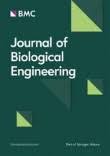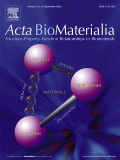Proteomic analysis of decellularized mice liver and kidney extracellular matrices

In this study, we employed a bottom-up proteomic approach to elucidate the intricate network of proteins in the decellularized extracellular matrices of murine liver and kidney tissues. This approach involved the use of a novel, perfusion-based decellularization protocol to generate acellular whole organ scaffolds. Proteomic analysis of decellularized mice liver and kidney ECM scaffolds revealed tissue-specific differences in matrisome composition, while we found a predominantly stable composition of the core matrisome, consisting of collagens, glycoproteins, and proteoglycans. Liver matrisome analysis revealed unique proteins such as collagen type VI alpha-6, fibrillin-2 or biglycan. In the kidney, specific ECM-regulators such as cathepsin z were detected. The identification of distinct proteomic signatures provides insights into how different matrisome compositions might influence the biological properties of distinct tissues. This experimental workflow will help to further elucidate the proteomic landscape of decellularized extracellular matrix scaffolds of mice in order to decipher complex cell-matrix interactions and their contribution to a tissue-specific microenvironment.
Authors are Anna-Maria Diedrich, Assal Daneshgar, Peter Tang, Oliver Klein, Annika Mohr, Olachi A. Onwuegbuchulam, Sabine von Rueden, Kerstin Menck, Annalen Bleckmann, Mazen A. Juratli, Felix Becker, Igor M. Sauer, Karl H. Hillebrandt, Andreas Pascher, and Benjamin Struecker.







